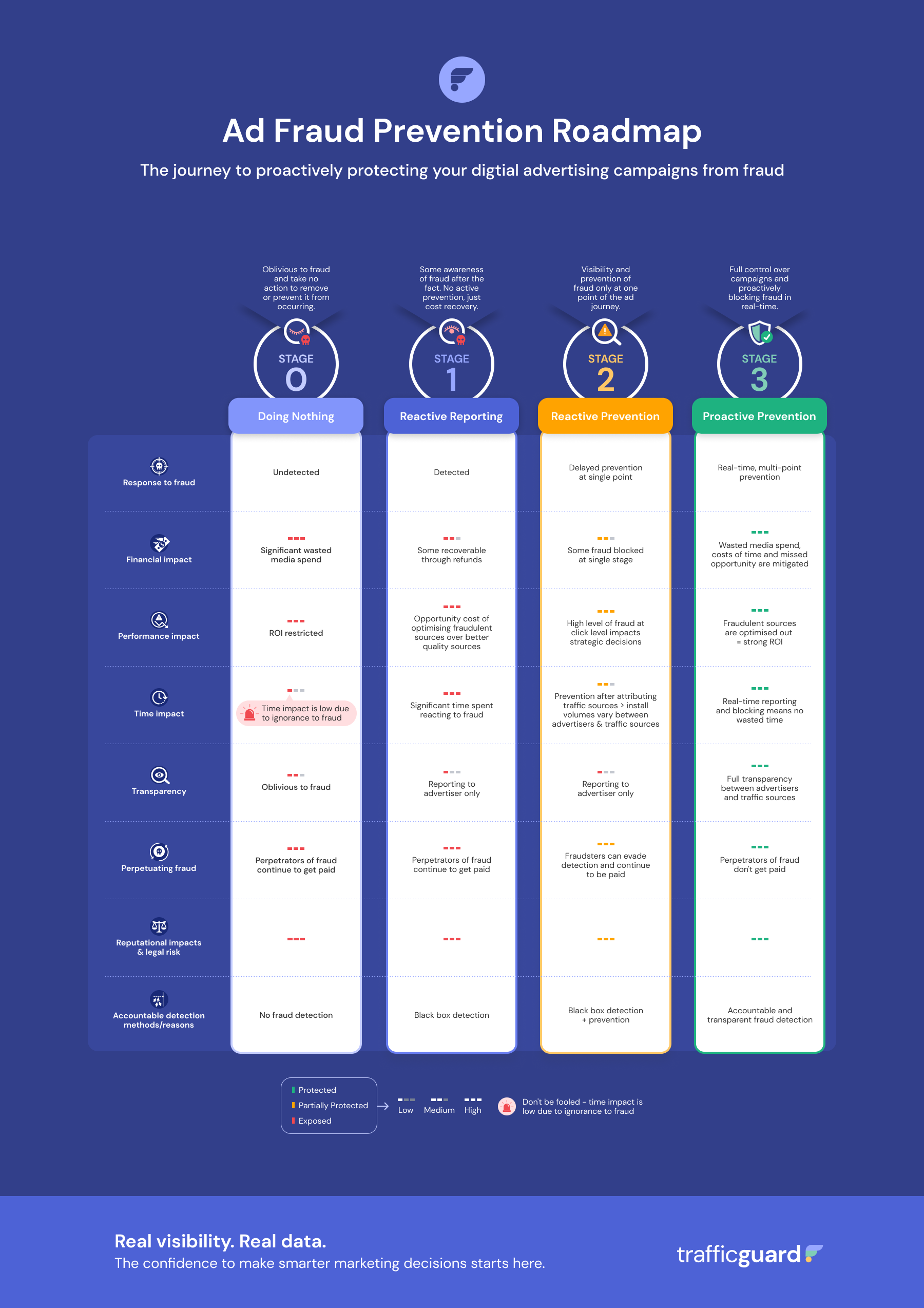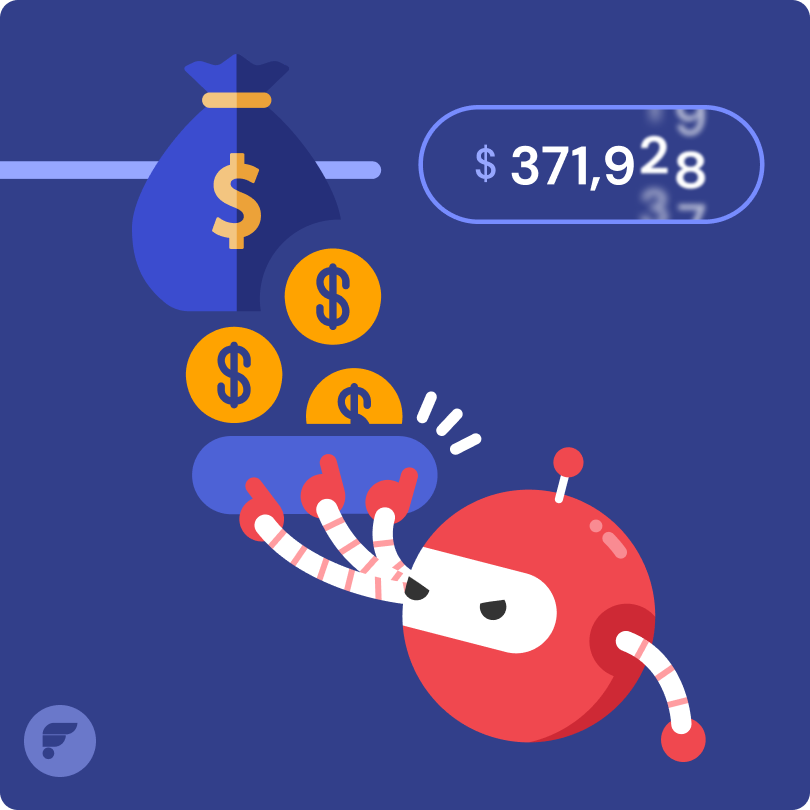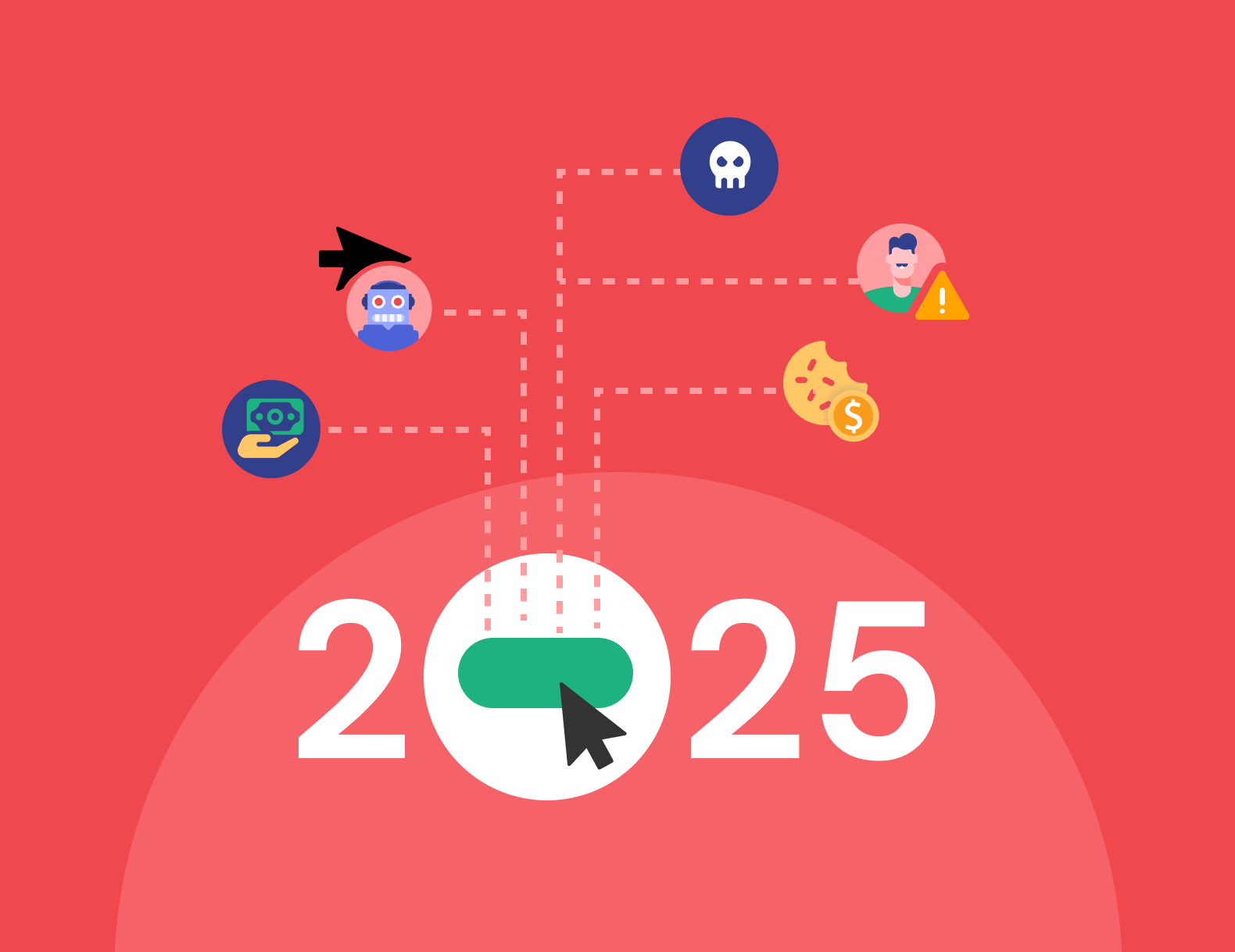The 4 Stages of Ad Fraud Prevention Maturity

Digital ad spend keeps rising and so does the risk of click fraud. Invalid clicks drain budgets, distort performance data, and reward fraudulent sources. If left unchecked, the financial and strategic damage can be severe.
Ad fraud prevention maturity is the journey from doing nothing to gaining full, real-time control over your campaigns. Knowing where you are on this scale is the first step to protecting your ROI and securing reliable performance data.
In this blog, we uncover the four stages of ad fraud prevention maturity and how advancing through them delivers cleaner data, stronger campaigns, and maximum ROI.
Why Ad Fraud Prevention Maturity Matters
Click fraud is more than a budget nuisance, it impacts every aspect of campaign performance.
- Financial performance: Wasted media spend on fake engagement can run into thousands each month.
- Campaign ROI: Fraud inflates CPCs, erodes profitability, and prevents budget from reaching real users, directly impacting profitability per user (LTV:CAC).
- Ad strategy: Poor-quality traffic skews audience signals, making optimisation decisions less effective and undermining net new user growth and incrementality.
The earlier you can detect and prevent click fraud, the more you protect your spend and maximise returns.
Overview of the 4 Stages

Stage 0 – Doing Nothing
Fraud is undetected and unchecked. Budgets leak, ROI stalls, and fraudulent sources get paid without challenge.
- Response to fraud: None, fraud goes unnoticed.
- Impact: High wasted spend, no visibility, and ongoing payment to bad actors.
- Reality: You may think your campaigns are fine, but ignorance comes at a cost.
Stage 1 – Reactive Reporting
Fraud is detected after the damage is done. Some recovery is possible through refunds, but there is no active prevention.
- Response to fraud: Detected but not blocked in real time.
- Impact: Missed optimisation opportunities, delays in decision-making.
- Reality: You know fraud is happening, but you’re still paying for it.
Stage 2 – Reactive Prevention
Some fraud is blocked, but only at a single point in the campaign journey. Protection is limited and threats slip through elsewhere.
- Response to IVT and fraud: Prevention at click level in one area, but not across all channels.
- Impact: High fraud volumes still influence strategy and audience data.
- Reality: Better than reactive reporting, but gaps in protection mean your budget remains exposed.
Stage 3 – Proactive Prevention
Fraud is detected and blocked in real time across multiple points in the ad journey. Full transparency between advertisers and traffic sources ensures bad actors don’t get paid.
- Response to fraud: Real-time, multi-point prevention.
- Impact: Optimised traffic quality, accurate data, and stronger ROI.
- Reality: You’re in full control; threats are neutralised before they cause damage.
How to Move From One Stage to the Next
From Stage 0 → Stage 1
- Start collecting and analysing log data.
- Use basic click fraud detection tools to identify suspicious activity.
From Stage 1 → Stage 2
- Introduce automated monitoring to flag anomalies faster.
- Implement IP filtering to block known fraudulent sources.
From Stage 2 → Stage 3
- Adopt a real-time click fraud prevention platform like TrafficGuard that blocks threats at multiple points in the user journey.
- Gain full transparency over traffic quality with actionable reporting.
If you are serious about advancing to proactive prevention, you need a structured approach. Our guide on building a click fraud response plan outlines the steps every advertiser should take to stay ahead of evolving threats.
Conclusion
The difference between Stage 0 and Stage 3 isn’t just about stopping ad fraud; it’s about reclaiming budget, improving ROI, and ensuring your ad strategy is built on accurate, trustworthy data.
With TrafficGuard’s click fraud prevention software, advertisers move quickly to Stage 3, stopping wasted spend before it happens and protecting every campaign in real time.
FAQ & Key Takeaways
1. How can I tell what stage I’m at now?
If you never review traffic quality and only rely on platform reports, you’re in Stage 0 (Doing Nothing). If fraud is only discovered after a campaign ends and you occasionally claim refunds, you’re likely in Stage 1 (Reactive Reporting). Advertisers running basic blocking tools like IP filters are in Stage 2 (Reactive Prevention). If you’re using real-time, multi-point protection with full transparency over traffic quality, you’ve reached Stage 3 (Proactive Prevention).
2. Why is Stage 3 the most valuable?
Stage 3 doesn’t just stop click fraud, it transforms how you run campaigns. By blocking invalid clicks in real time and across multiple touchpoints, you protect budget before it’s wasted, ensure clean data for optimisation, and gain full transparency with traffic sources. The result is higher ROI, accurate targeting signals, and stronger long-term growth.
3. Can I skip stages?
Yes. Many advertisers move directly from Stage 0 or Stage 1 to Stage 3 by adopting advanced click fraud prevention software. You don’t have to waste months in partial protection. With a solution like TrafficGuard, you can instantly unlock proactive, real-time defence and eliminate fraud before it impacts performance.
Get started - it's free
You can set up a TrafficGuard account in minutes, so we’ll be protecting your campaigns before you can say ‘sky-high ROI’.
Subscribe
Subscribe now to get all the latest news and insights on digital advertising, machine learning and ad fraud.








